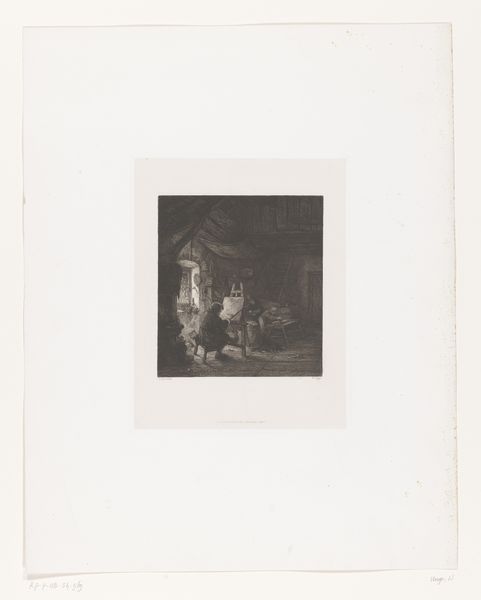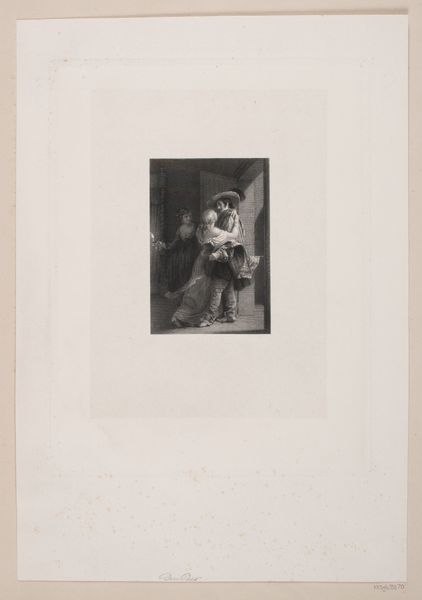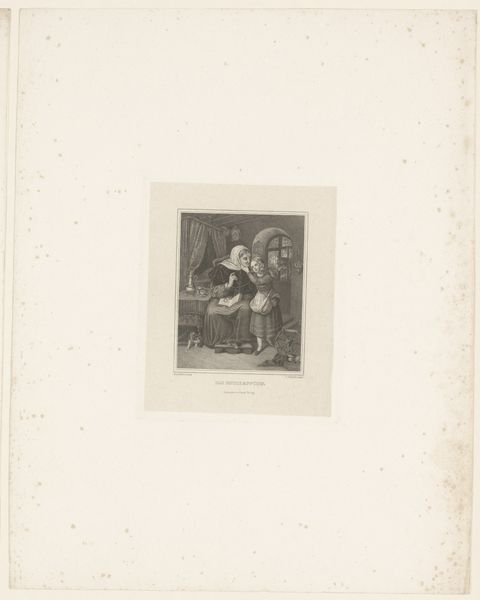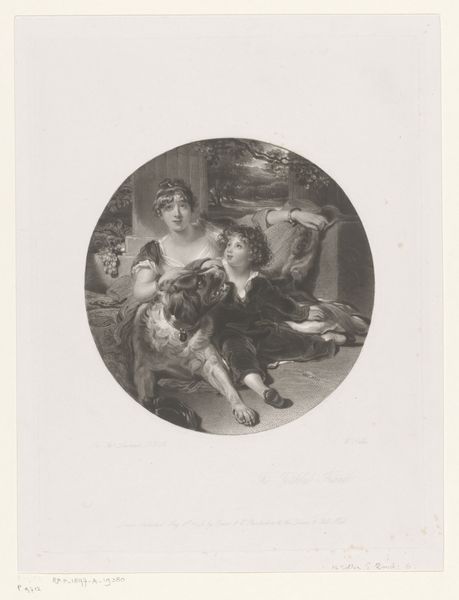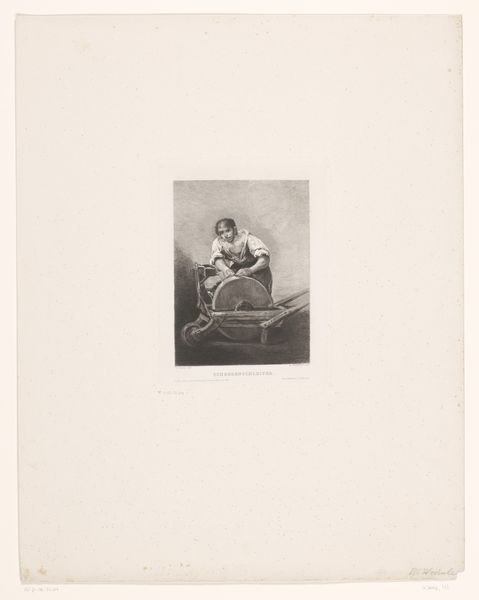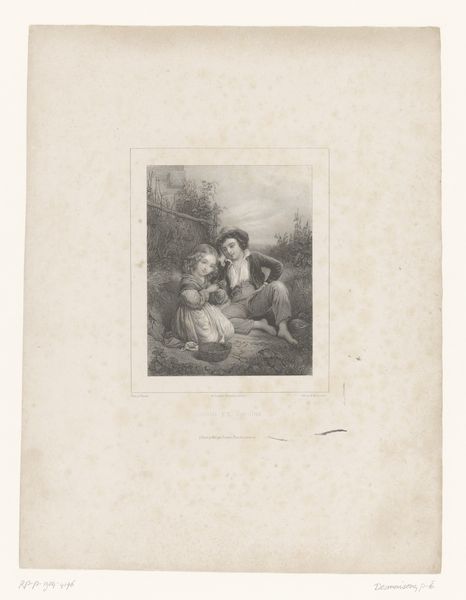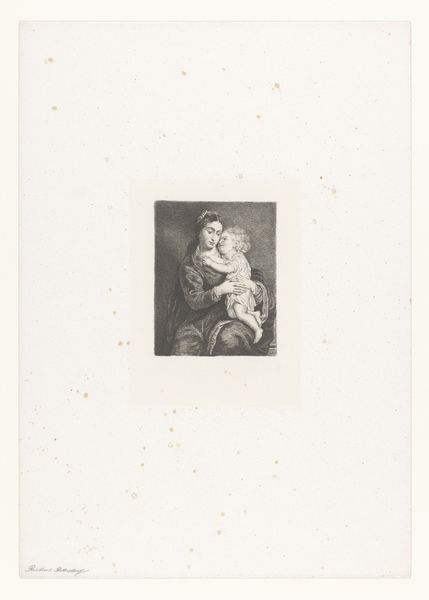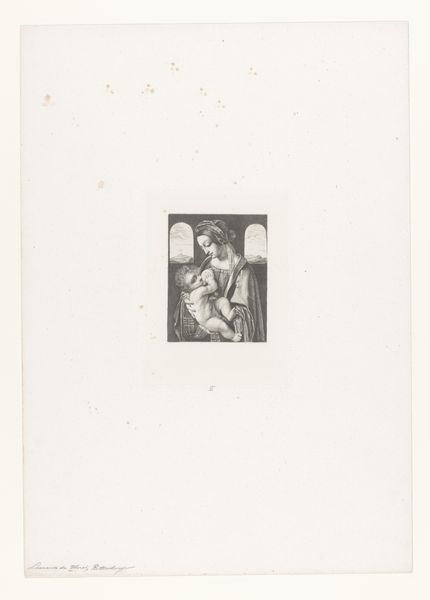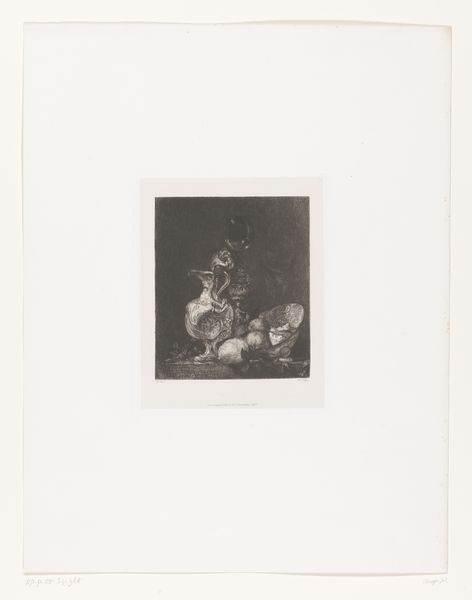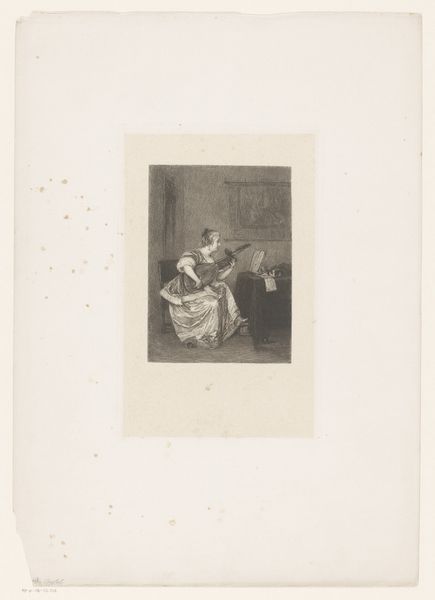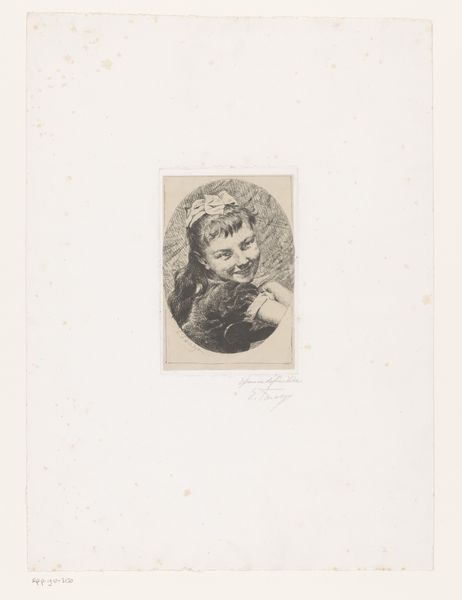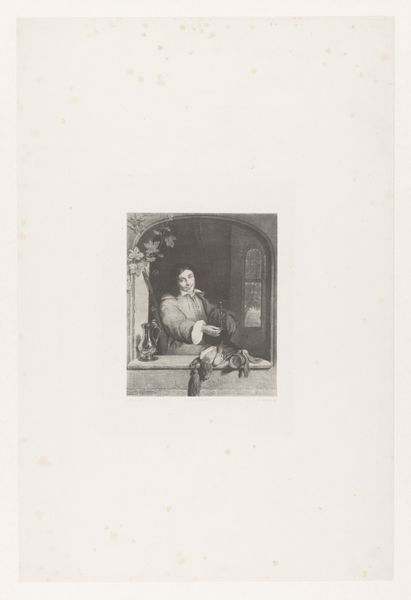
drawing, print, etching
#
portrait
#
drawing
# print
#
etching
#
genre-painting
#
realism
#
monochrome
Dimensions: height 539 mm, width 355 mm
Copyright: Rijks Museum: Open Domain
Curator: Welcome. Today, we will discuss Adolf Carel Nunnink's etching, "Jongen met hoed," created sometime between 1867 and 1874, now housed at the Rijksmuseum. Editor: It immediately strikes me as theatrical. The lighting, the boy's costume… there's a clear emphasis on staging a particular kind of self-presentation through sartorial choice. What’s being crafted here, materially and symbolically? Curator: Precisely. Note how Nunnink meticulously uses hatching and cross-hatching to sculpt form and delineate texture. The stark contrast between light and shadow directs the viewer's gaze to the boy’s face and clothing, which carry both an historicizing reference, and perhaps the touch of genre-painting, suggesting a playful scene of childhood rather than formal portraiture. Editor: So we have a boy playing dress-up. What's interesting to me is the material context; was such fine clothing typical of the average Dutch youth at that time? Or is this a carefully constructed fiction aimed at representing privilege? This image seems complicit in promoting fantasies of a wealthy past by appropriating that wealth through the labor and skill of the artist, Nunnink. Curator: Your reading certainly addresses concerns surrounding labor and material conditions of the time. What remains compelling to me is how successfully Nunnink translates painterly effects to printmaking, capturing a nuanced interplay of light and shadow which elevates a simple genre subject to a compelling tableau. It’s as though Nunnink aims to imbue realism with an atmospheric intensity typically found in painting. Editor: And yet, even within realism, there are layers of fabrication to expose. That 'atmospheric intensity' is rendered possible only via specific modes of labor and the consumption of resources; the plate preparation, the etching itself. Are these less painterly because they are materially reproducible, and were also easier to circulate as commodity objects? I believe focusing on material context gives more texture to the artwork than discussing its aesthetic form. Curator: A fine note on which to conclude; a demonstration how formal elegance can never be separated from its material circumstance. Thank you. Editor: Thank you. I think the dialogue provides useful insight.
Comments
No comments
Be the first to comment and join the conversation on the ultimate creative platform.

